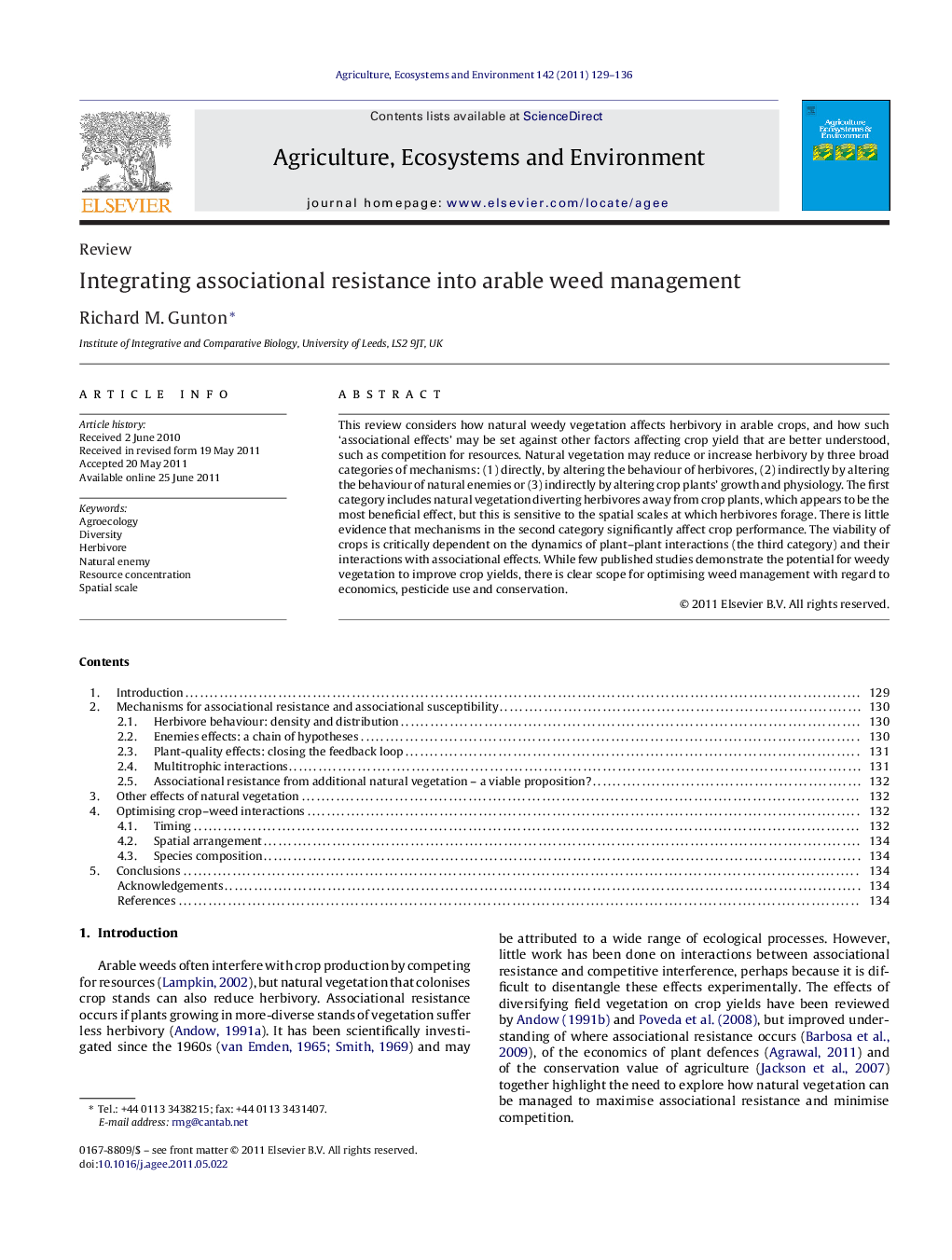| کد مقاله | کد نشریه | سال انتشار | مقاله انگلیسی | نسخه تمام متن |
|---|---|---|---|---|
| 2414657 | 1552106 | 2011 | 8 صفحه PDF | دانلود رایگان |

This review considers how natural weedy vegetation affects herbivory in arable crops, and how such ‘associational effects’ may be set against other factors affecting crop yield that are better understood, such as competition for resources. Natural vegetation may reduce or increase herbivory by three broad categories of mechanisms: (1) directly, by altering the behaviour of herbivores, (2) indirectly by altering the behaviour of natural enemies or (3) indirectly by altering crop plants’ growth and physiology. The first category includes natural vegetation diverting herbivores away from crop plants, which appears to be the most beneficial effect, but this is sensitive to the spatial scales at which herbivores forage. There is little evidence that mechanisms in the second category significantly affect crop performance. The viability of crops is critically dependent on the dynamics of plant–plant interactions (the third category) and their interactions with associational effects. While few published studies demonstrate the potential for weedy vegetation to improve crop yields, there is clear scope for optimising weed management with regard to economics, pesticide use and conservation.
► Natural vegetation sometimes diverts insect herbivores away from crops.
► Plant–plant interactions can create vicious or virtuous cycles affecting crop quality.
► Precision weed management could increase economic returns of Brassica crops.
Journal: Agriculture, Ecosystems & Environment - Volume 142, Issues 3–4, August 2011, Pages 129–136